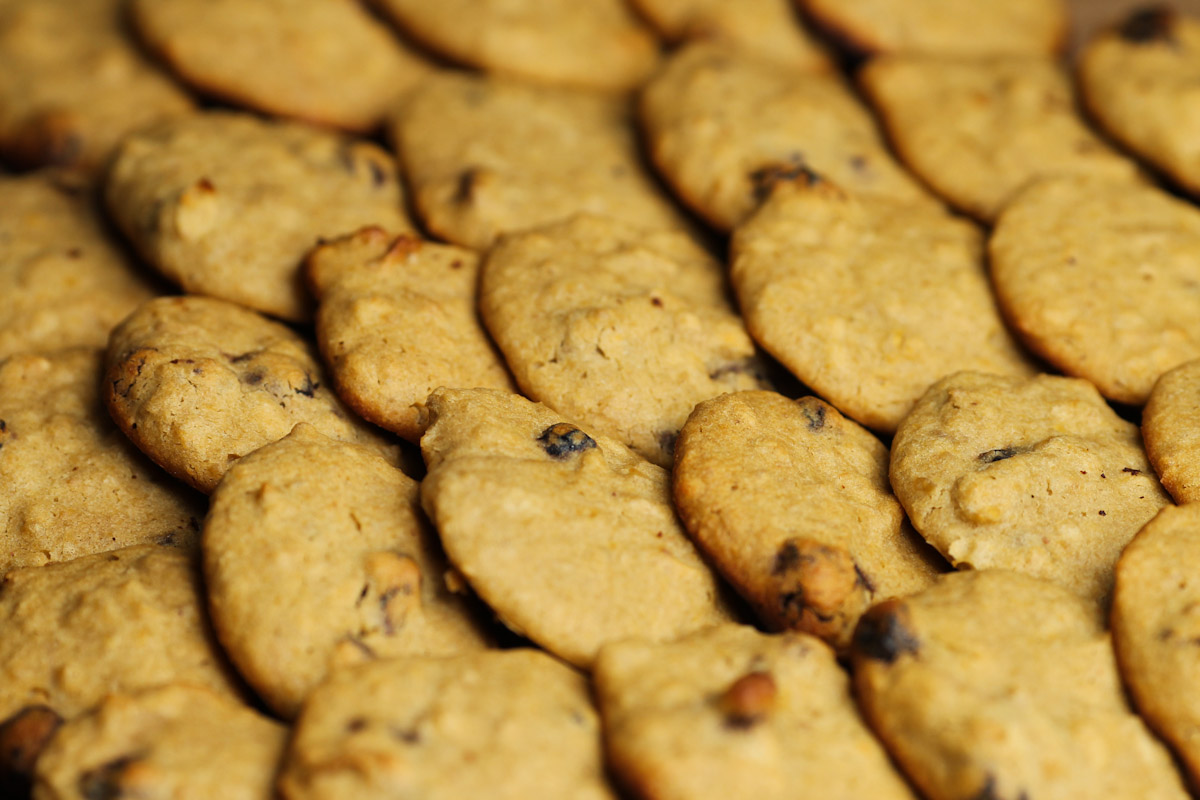
I found out that gluten was an issue when my daughter was reacting to my breast milk. She had terrible sleep and digestion issues until I took gluten, dairy and soy out of my diet. We thought that was the end, but our digestion problems continued. Through stool samples, testing and the mother of all elimination diets we know we have a lot of food intolerances due to gut bacteria and missing digestive enzymes. We still don’t know the whole story yet, but we are well on our way.
Based on the combination of our food issues, it became impossible to find pre-made snacks for my son to take to school that were also nut free. We tried every pill for dairy and they do not help. We can’t eat most grains, mostly everything has to be cooked, whole vegetable and legume groups are out and it’s boiling down to being an issue digesting cellulose. So, yeah… shopping became difficult. This was not my first time at the adversity-rodeo however, so I promptly developed delicious recipes so that my son will not feel left out and still get to eat his favourite things. On top of that, these are school safe so that other kids with severe nut allergies will not have to be concerned. With great gut bacteria you need to cut out foods that feed it, so I make my foods low glycemic.
Get ready to eat some amazing cost effective snacks!
Savoury crackers
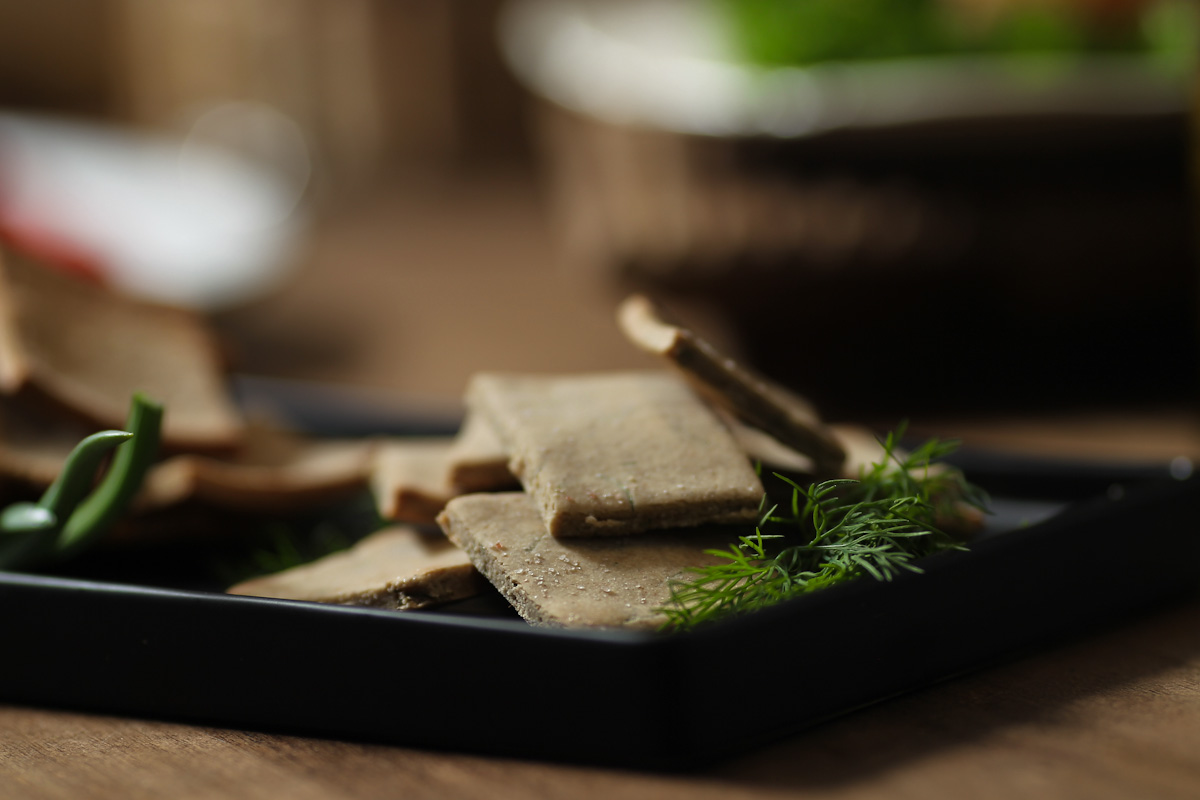
I love crackers and I used to adore crackers and cheese. Having issues with a lot of grains and seeds doesn't leave many store bought cracker options, however. I've found that on the whole, the flour of any grain or legume, after baking, isn't as difficult to digest as the whole cooked grain. So if you need that for any reason, more processed is the way to go.
These are super delicious and look gorgeous on top. Perfectly decorated with pickled veggies and cheeses you can eat. They are also hardy too, so great for scooping up your favourite thick dips.
Ingredients:
- 1 cup tapioca flour
- 1 cup quinoa flour
- 1 cup tigernut flour (this is a tuber, not a nut and school safe)
- 6 tsp xanthan gum (This can be derived from wheat, corn or soy glucose, so if you have an issue with any of those, you can find a version that works for you or use guar gum in a 1–1. If you only have issues with gluten, the proteins are not used in production so this should be safe for you.)
- 4 tbsp avocado oil
- 2 tsp salt
- 1 cup water
Directions:
- Heat oven to 450F. Combine dry ingredients and mix until even. If you're using a stand mixer, you can put your dried ingredients in and grab your dough hook. If you're using human power, set 3/4 cups of water to the side.
- Add wet ingredients and stir until it's evenly wet. Use your hands to make the dough into a ball. It will be a bit sticky. Use tapioca flour lightly dusted on a surface and cut your dough in half.
- Knead in your alternate ingredients to make cheese crackers vs tomato basil, or ignore and make your own flavour.
- Form your dough into a square and roll out to 1/8 inch thick. Lightly brush with water and top with a bit of salt before cutting into squares, rectangles, or whatever. We used cookie cutters to theme some of ours.
- Place crackers on an unbleached parchment lined sheet. Prick the tops with a fork to avoid crackers being too chewy.
- Cook for 7–15 minutes on a parchment lined baking sheet depending on thickness.
Notes:
Alternates: basil, tomato powder, dried onion flakes, dulse flakes and salt to taste OR 1/2 cup nutritional yeast (or whatever cheese you can eat — a lot of vegan cheeses have peas or corn in them, so if be sure to read ingredients for anything that bothers you) and dulse flakes to taste.
Chocolate crackers
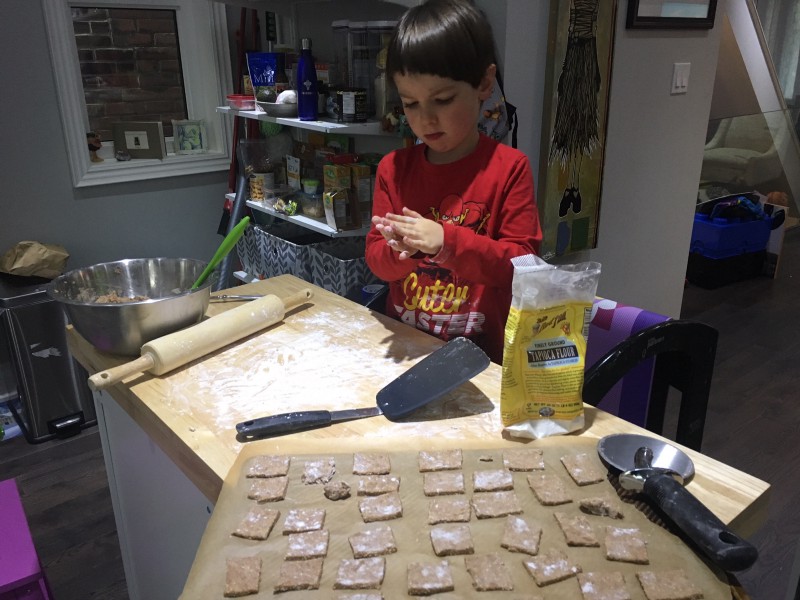
Ingredients:
- 1 cup tapioca flour
- 1 cup quinoa flour
- 1 cup millet grits
- 1/2 cup dairy free cocoa
- 6 tsp xanthan gum (This can be derived from wheat, corn or soy glucose, so if you have an issue with any of those, you can find a version that works for you or use guar gum in a 1–1. If you only have issues with gluten, the proteins are not used in production so this should be safe for you.)
- 4 tbsp avocado oil
- 2 tsp salt
- 1 handful cocoa nibs to sprinkle
- 1 cup water
Directions:
- Heat oven to 450F. Combine dry ingredients and mix until even. Add wet ingredients and stir until it’s evenly wet. Use your hands to make the dough into a ball. It will be a bit sticky. Use tapioca flour lightly dusted on a surface and cut your dough in half. Knead in your alternate ingredients to make cheese crackers vs tomato basil, or ignore and make your own flavour. Form your dough into a square and roll out to 1/8 inch thick. Lightly brush with water and top with a bit of salt before cutting into squares, rectangles, or whatever. We used cookie cutters to theme some of ours. Prick the tops with a fork to avoid crackers being too chewy. Cook for 7–15 minutes on a parchment lined baking sheet depending on thickness.
Chocolate coconut bites
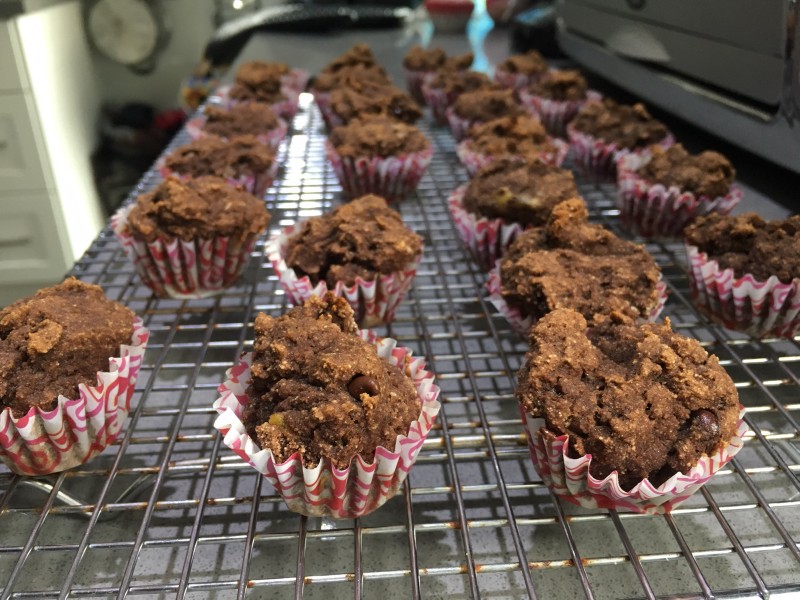
With limited ingredients, it's important to have a variety of textures as well as flavours in your pantry. I love these coconut bites because they are more dense than a muffin and more chewy than a cookie. Also they give you a lot of chocolate flavour without a lot of sweetness.
Ingredients:
- 2 bananas, medium sized and ripe
- 2 tbsp coconut oil
- 1/2 cup coconut sugar
- 6 tbsp aquafaba
- 1/2 cup coconut milk
- 1/2 cup water
- 1 cup coconut flour
- 2 tsp baking powder
- 1/3 cup cocoa powder
- 3/4 tsp xanthan gum
- 1/3 cup chocolate chips
Directions:
- Heat oven to 375F.
- Combine dry ingredients and mix until even. Combine wet ingredients in a bowl and beat until even.
- Mix the wet with the dry until combined and add the chocolate chips. Dairy and sugar free chocolate chips exist!
- Fill muffin cups to the top of the paper. These rise but not a lot. If you do tiny muffins cups (which we do), bake for 20 minutes.
- If you do larger muffin cups, bake for 30–35 minutes. Let rest to cool on a baking rack.
Notes:
Aquafaba can be substituted with eggs, or other starchy egg replacers. 3 tbsp of aquafaba is basically one egg. Depending on your egg substitute you may need to prepare your ‘eggs’ separately. Lots of egg replacers use potato or corn starch, so if you have issues with those, be sure to read labels.
Cereal Bars
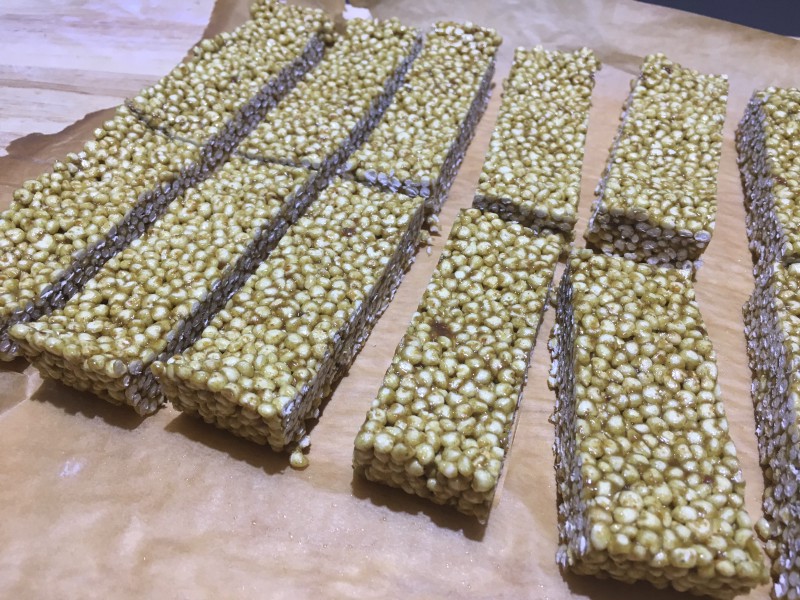
If you are doing a plant-based diet, it's important to get your protein. Millet is a full protein grain, and having it puffed makes it easier to digest then the hydrated version as some starches are broken down by dehydration.
My son loves his cereal bars and I need to make him some more and get a good glam shot of them, as we go through them fairly quick. It's a nice feeling to not have to guard the treats, because they are all very good for you. That's a nice upside to having digestive issues. Lol.
Ingredients:
- 4 cups puffed cereal (quinoa/millet/rice, depending on your allergies and intolerances)
- 1/2 cup pumpkin seed butter
- 1/2 cup maple syrup
Directions:
- In a small pot, boil the pumpkin seed butter and maple syrup for 3 minutes, stirring every 20 seconds until the mixture starts to thicken and ‘cracks’.
- In a medium bowl, put 3 cups of your chosen puff. Mix in the sauce and add the additional 1 cup of left over puff until they’re evenly lightly coated.
- Squish into a parchment lined 12x12 pan and put in the fridge for an hour. Cut into bars or however you’d like.
Notes:
Buy the puffed millet and quinoa. I tried making this at home and it doesn’t work. I couldn’t find any in stores, but found a lot online. You can sub out agave for the maple syrup or any other butter/nut butter for pumpkin seed if you don’t care about school safe or don’t have issues with sunflower butter.
Millet Pizza
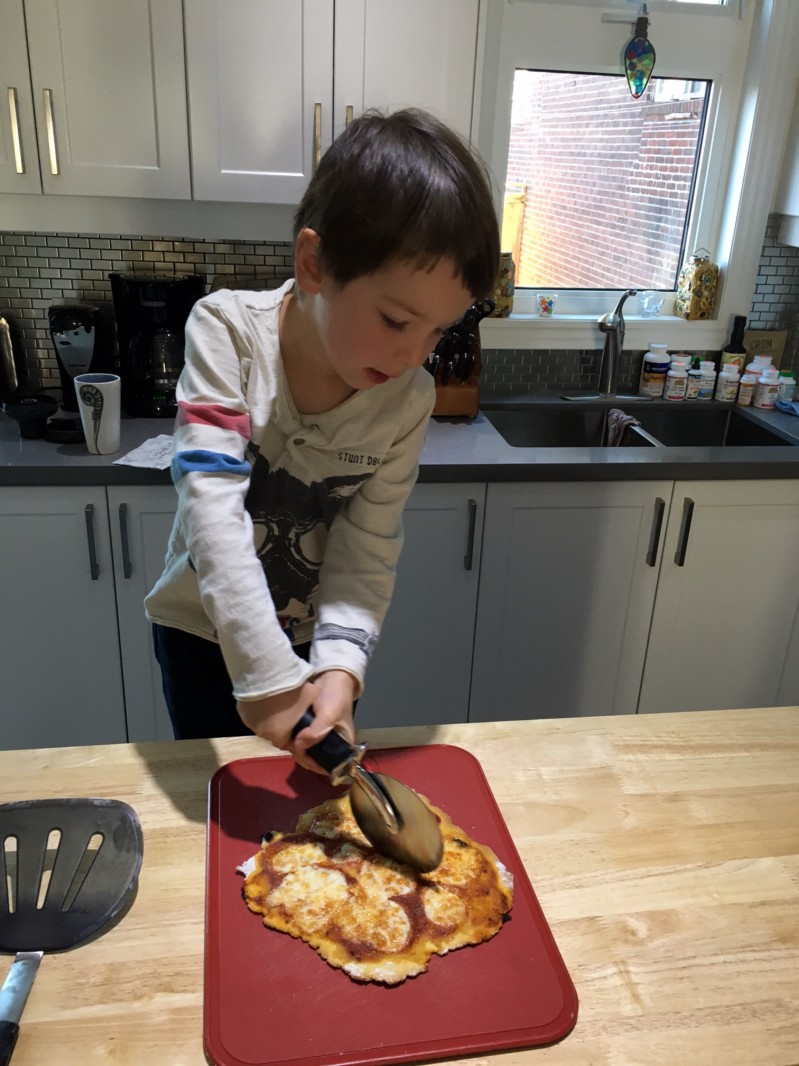
This delicious pizza is easy to make with the kids, or for yourself and is happily formed into other shapes to make thin flat breads to use with appetizers.
A lot of gluten-free recipes rely heavily on similarly hard to digest grains. I like to use sorghum and millet flours as they are full protein grains and they don’t mess with my gut. Tapioca adds in a bit of the stretch you miss with the other two.
My son really loves this crust and you can use your fingers to shape your pie. If you or kids are sticky-adverse, dust your hands in tapioca flour as well as the dough ball when forming.
Ingredients:
- 1 3/4 cups flour (4/5 millet, 1/5 tapioca)
- 2 tsp xanthan gum
- 3 tbsp olive oil
- 1 1/2 tsp turbinado sugar
- 3/4 tsp sea salt
- 1/4 cup tomato sauce (or oil, or pesto, mashed beets… whatever you can eat)
- 1 tsp packet quick rise pizza yeast
- 2/3 cup warm water (110F is best)
- 1 cup vegan cheese of your choice
Directions:
- 1. Set oven to 450F.
- 2. Combine 1 cup of flour, undissolved yeast, sugar and salt in a bowl.
- 3. Add water and oil mix until blended. Gradually add the 3/4 cup until it is a soft ball. The dough will be a bit sticky.
- 4. Knead on tapioca floured surface, adding in more tapioca if required until smooth and elastic. About 4–6 minutes. Or put in a stand mixer and save yourself some work. Split dough in 2 if doing thin crust.
- 5. Roll out to fit a pizza pan. Cook crust for 10 minutes. Lower oven to 400F. Top pizza with your sauce and cheese or whatever. Cook for 10 more minutes until cheese is melted and bubbly.
Notes:
Flour your hands with tapioca if you are working with your hands instead of a stand mixer with a dough hook. Less sticky, much faster!
Chickpea cookies
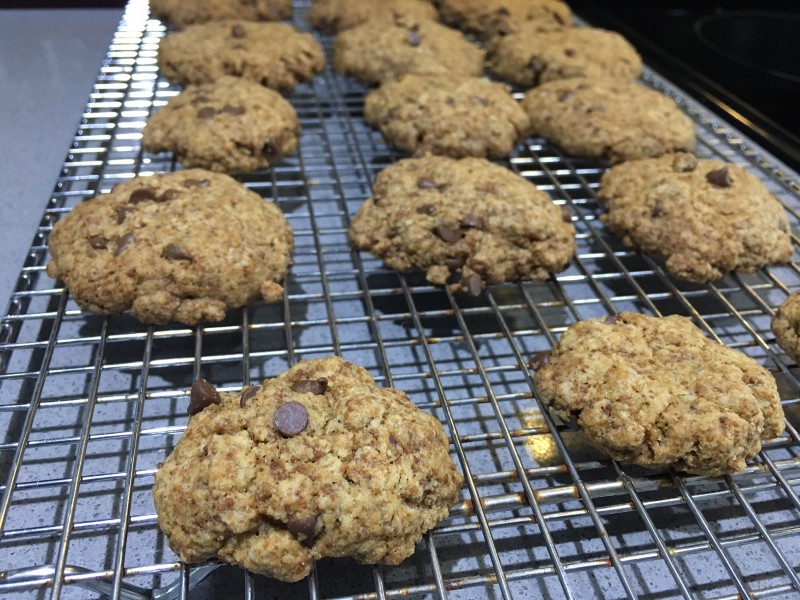
Chickpea flour is the best. After processing or cooking, the FODmap value goes down for most things. As chickpeas are high protein and have one of the lowest amounts of insoluble fiber in the legume family, they are my go-to when creating easy to digest baked goods for my son and me. Sorghum is a full protein grain and I do quite well with that one in flour form too.
One of the better parts of having a low sugar diet is that you don't have feel bad about having cookies for breakfast. Using coconut sugar, which is lower glycemic, enables a lot of tasty cookie meals.
Ingredients:
- 3/4 cup chickpea flour
- 1 cup white sorghum flour
- 1/2 tsp salt
- 2/3 cup dairy free chocolate chips
- 3/4 cup coconut sugar
- 1/2 cup coconut oil
- 4 tbsp aquafaba
Directions:
- Set oven to 350F.
- Mix dry ingredients until combined. Add wet ingredients and stir until dough is formed. Add in chocolate chips and stir some more! Form cookies in sizes and shapes that you love, and place on a parchment lined baking sheet.
- Cook at 25 minutes for small cookies and 35 minutes for larger ones. If you like your cookies soft, cook for 5–7 minutes less. Cool on a baking rack. Feel smug while eating high protein cookies.
Notes:
I always choose a non-bleached parchment sheet as we are sensitive to that. They are all available in a variety of prices.


